Fabriano, what to see: 10 places to discover in the city of paper
Located in the Marche region of Italy, Fabriano is a city with a history rooted in Neolithic times as evidenced by archaeological finds at the Attidium site. Fabriano’s best-known feature is its ancient tradition in papermaking, which has earned it the title of UNESCO Creative City, in the category of Crafts, Arts and Folk Traditions, due to its paper-related craftsmanship. Indeed, since the Middle Ages, Fabriano has been a center of excellence in the manufacture of the material, with its paper mills operating since the 13th century, as evidenced by the Paper and Watermark Museum. But beyond that, Fabriano has a vast historical and artistic heritage of medieval palaces and towers, churches and oratories. The Cathedral of San Venanzio with its 14th-century details is one of the symbols of the city. Among the most important buildings besides the Cathedral is the Palazzo del Podestà, a medieval-era structure positioned in Town Hall Square, the center of the city. Fabriano is also not only history and art, but also nature; surrounded by natural landscapes, visitors can enjoy walks and outdoor activities. The Frasassi Caves, for example, are among the largest cave systems and are a visit of total immersion in nature. We at Finestre Sull’Arte have therefore collected the top 10 places to admire and understand the town of Fabriano, here they are.
1. The Town Hall Square
Town Hall Square is the centerpiece of Fabriano. The square is distinguished by its triangular shape, unique in the area. The square is dominated by a 13th-century structure, the Palazzo del Podestà, still the symbol of the town. Built beginning in 1255 at a symbolic point-the place where the two original settlements and the four main quarters of the city converged-the palace is distinguished from the surrounding buildings by its use of white stone, contrasting with the red brick of the other buildings. Inside the square is the Palazzo del Comune, built around 1350, which was the residence of the Chiavelli lords, who ruled the city until 1435. The courtyard of the palace, on the other hand, leads to the Teatro Gentile, dedicated to one of the most celebrated painters of Italian Gothic art, Gentile da Fabriano (Fabriano, 1370 - Rome, 1427). The south side of the square, on the other hand, is occupied by the Bishop’s Palace, once the seat of the Priors, and at its side is the Civic Tower of Fabriano.
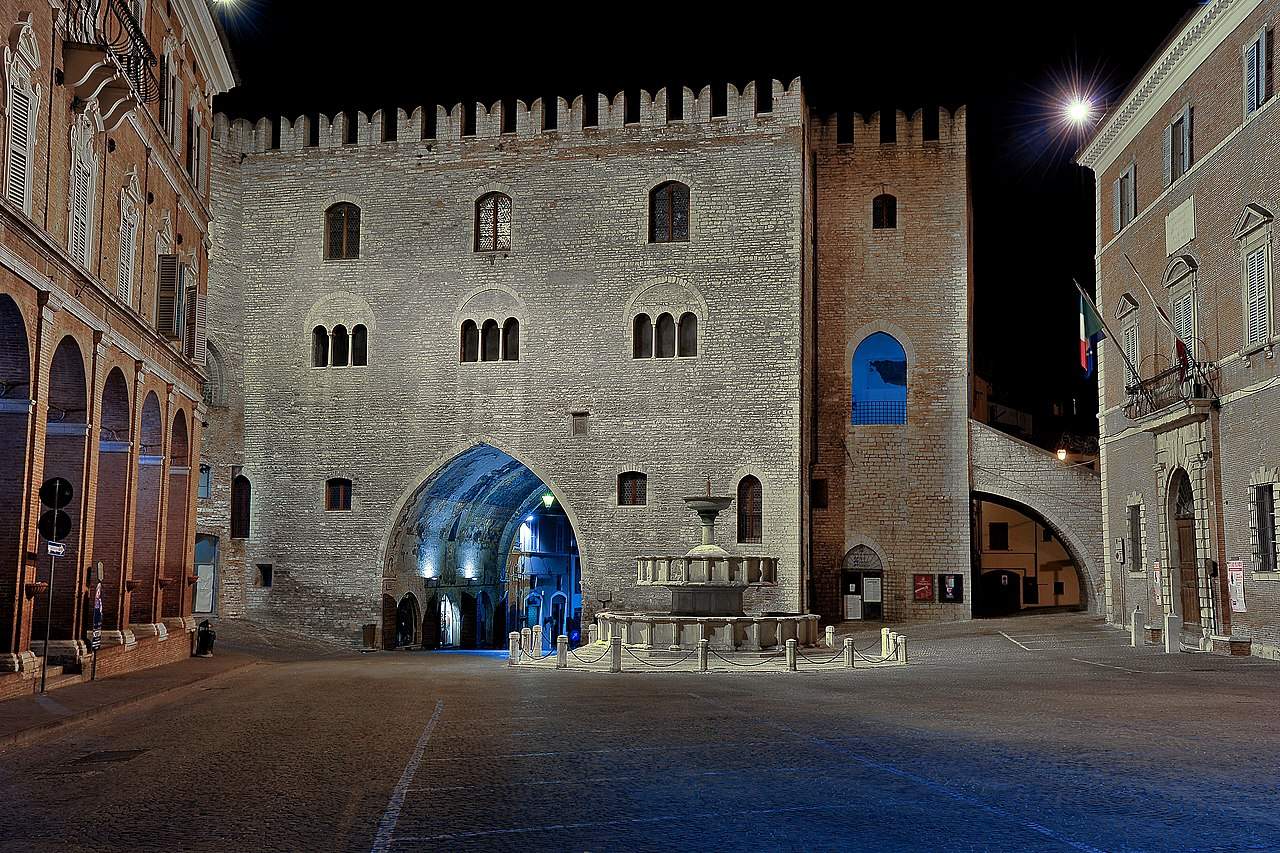
2. The Bruno Molajoli Civic Art Gallery.
The Fabriano Civic Art Gallery was established in 1862, when the municipality acquired an initial nucleus of works from the property of ecclesiastical institutions. The first exhibition layout already included important works by Fabriano artists of the 14th and 15th centuries, such as Allegretto Nuzi ’s Triptych (several works of which are preserved in the museum) and Antonio da Fabriano’s Dormitio Virginis. Between 1911 and 1913, the collection was significantly enriched by the decision of the San Venanzio Cathedral Chapter to transfer an important group of works to it, including a series of Flemish tapestries from the 16th and 17th centuries. To date, the Picture Gallery houses collections covering different artistic periods, with sections devoted to Romanesque, Gothic, Renaissance, Mannerist, Baroque, and Neoclassical art. Modern artists featured include Alberto Burri with the work Bianco, Enrico Castellani with Superficie Bianca, Giacomo Balla with Ritratto di Elica, and Arnaldo Pomodoro with Sasso. On the other hand, among the older artists preserved are Filippo da Verona with Madonna and Child, St. Nicholas of Bari, St. Peter, and Franceschino di Francesco with Members of Religious Orders Following the Augustinian Rule. There is also a wooden sculpture depicting St. Peter the Martyr, and attributed to Donatello, and there is also a Madonna of the Rosary by Orazio Gentileschi, who worked for six years in Fabriano. Since 1994, the civic collection has found its current home in the former Spedale di Santa Maria del Buon Gesù.
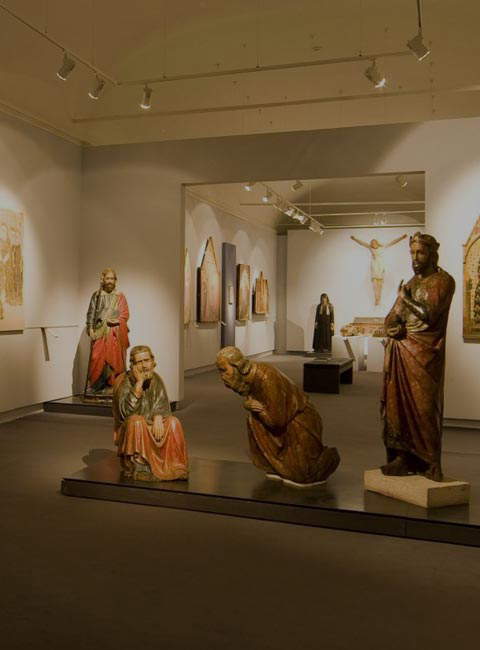
3. The Cathedral of San Venanzio
The earliest records of the Cathedral of San Venazio date back to 1160, but it was not until 1253 that it became the mother church of Fabriano; at present few architectural elements remain of the ancient 14th-century structure, such as the outer line of the apse and some vestiges of ancient chapels. To the right of the choir stalls is the Chapel of San Lorenzo, with a cycle of 14th-century frescoes by Fabriano artist Allegretto Nuzi, depicting scenes from the saint’s life. The Chapel of the Holy Cross and St. John the Evangelist, on the other hand, are frescoed by Giovanni di Corraduccio and the Master of St. Verecondo. The interior of the church consists of a single nave with six chapels on each side, each adorned with fine stucco, gilded friezes and works by the most celebrated painters of the time, including Orazio Gentileschi, who was responsible for the decorative cycle of the Vallemani Chapel, also known as the Chapel of the Crucifix, one of the most important in the region, executed between 1613 and 1616: the frescoes are on the theme of the Passion of Christ and the scenes depict the Oration in the Garden (right wall) and the Kiss of Judas (left wall), while the back wall is adorned with a canvas, also by Gentileschi, depicting the Crucifixion. Also by Gentileschi are the vault frescoes depicting Christ Crowned with Thorns, the Eternal Father in Glory, and Christ Scourged. Also present are works by Simone Cantarini, Salvator Rosa, Claudio Veronese, Giovanni Francesco Guerrieri, and others.
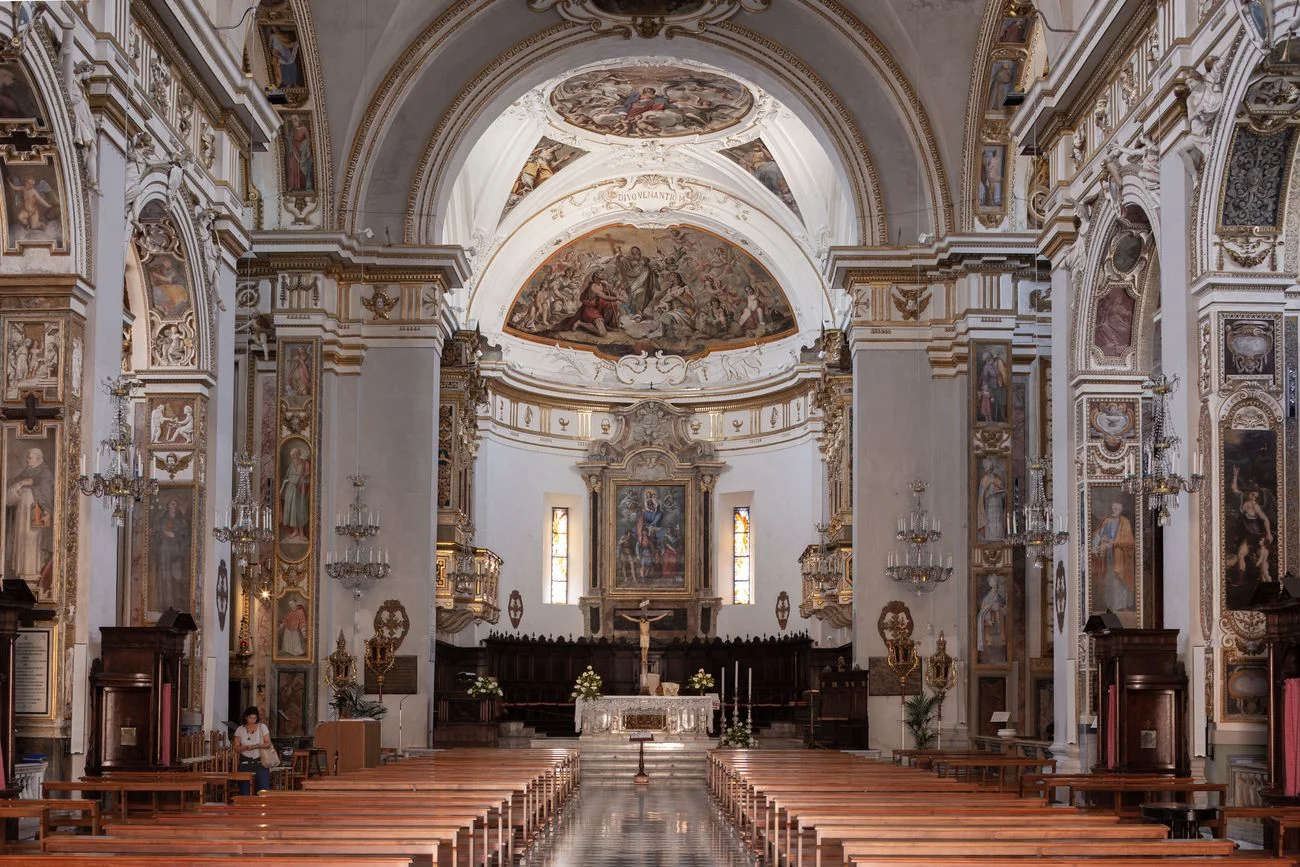
4. Paper and Watermark Museum
Housed in the recently restored former Dominican Convent complex, the Paper and Watermark Museum chronicles seven hundred years of the city’s papermaking tradition. The museum is divided into sections that illustrate the entire paper production cycle: from handmaking to the use of the finished product, including displays of watermarks and the techniques for making them. The museum also offers a historical overview of the paper journey, its development in Fabriano, manufacturing processes and related technology, presented through documents and thematic sheets. Documentary material relating to the 12th, 13th and 14th centuries, preserved at the Fabriano Municipal Historical Archives, besides this allows a partial and fragmentary reconstruction of the beginnings and evolution of papermaking in this important center of the Marche region.
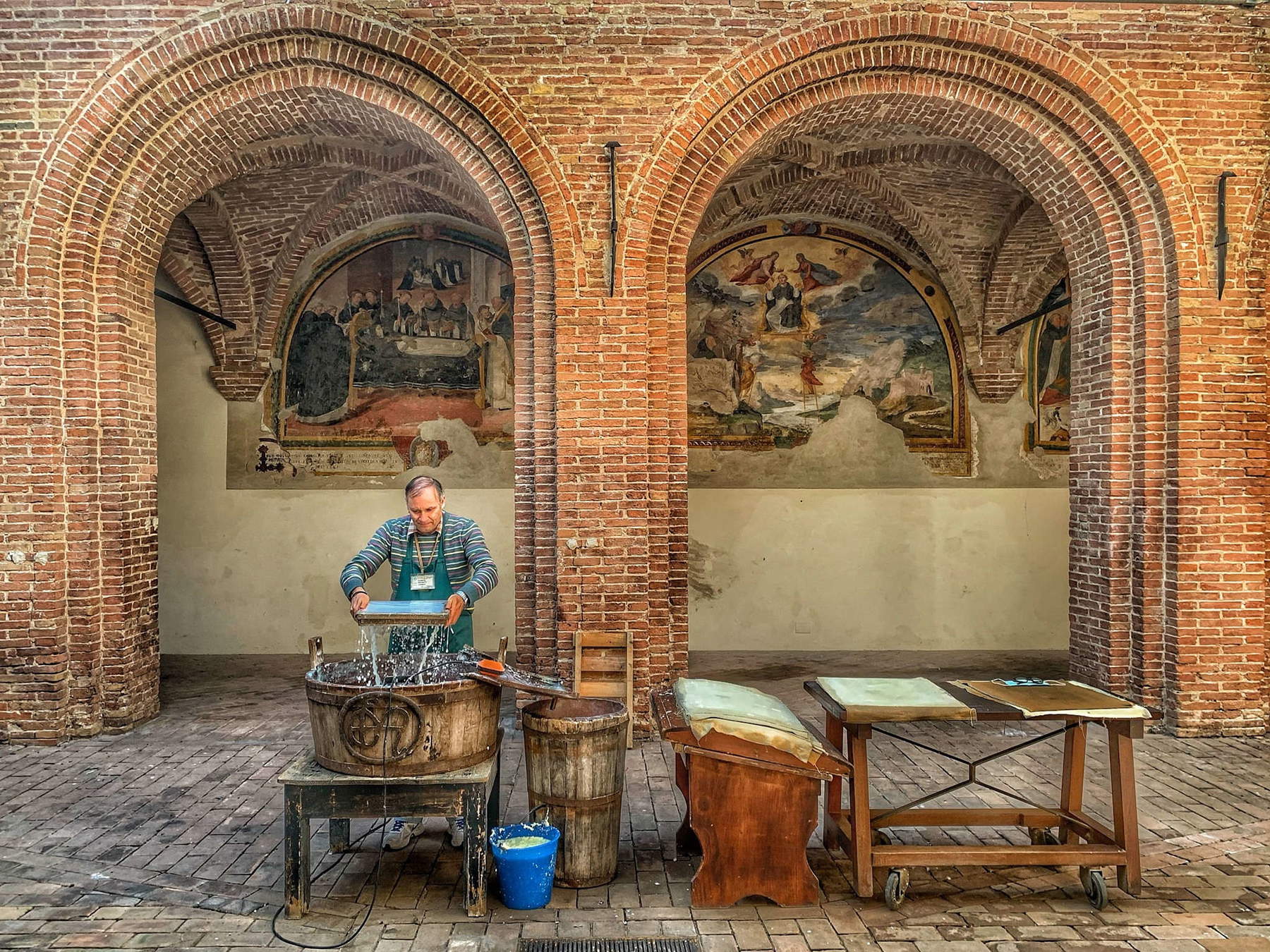
5. The Mazzolini Giuseppucci Pharmacy Museum
The Mazzolini Giuseppucci Pharmacy Museum is striking for its neo-Gothic style wooden furnishings. Fabriano’s pharmacy was a meeting point for lay and intellectual circles that operated around the versatile figure of Ermogaste Mazzolini, attracted by Adolfo Ricci ’s sculptures that transformed the place into a small temple dedicated to scientific progress. After a recent restoration, the pharmacy reopened to the public under the new name 1896 Science and Nature, in honor of the year of its founding. Today, the aroma of wood welcomes visitors and mingles with that of aromatic and medicinal plants, protagonists of the herbal preparations and natural cosmetics on display.
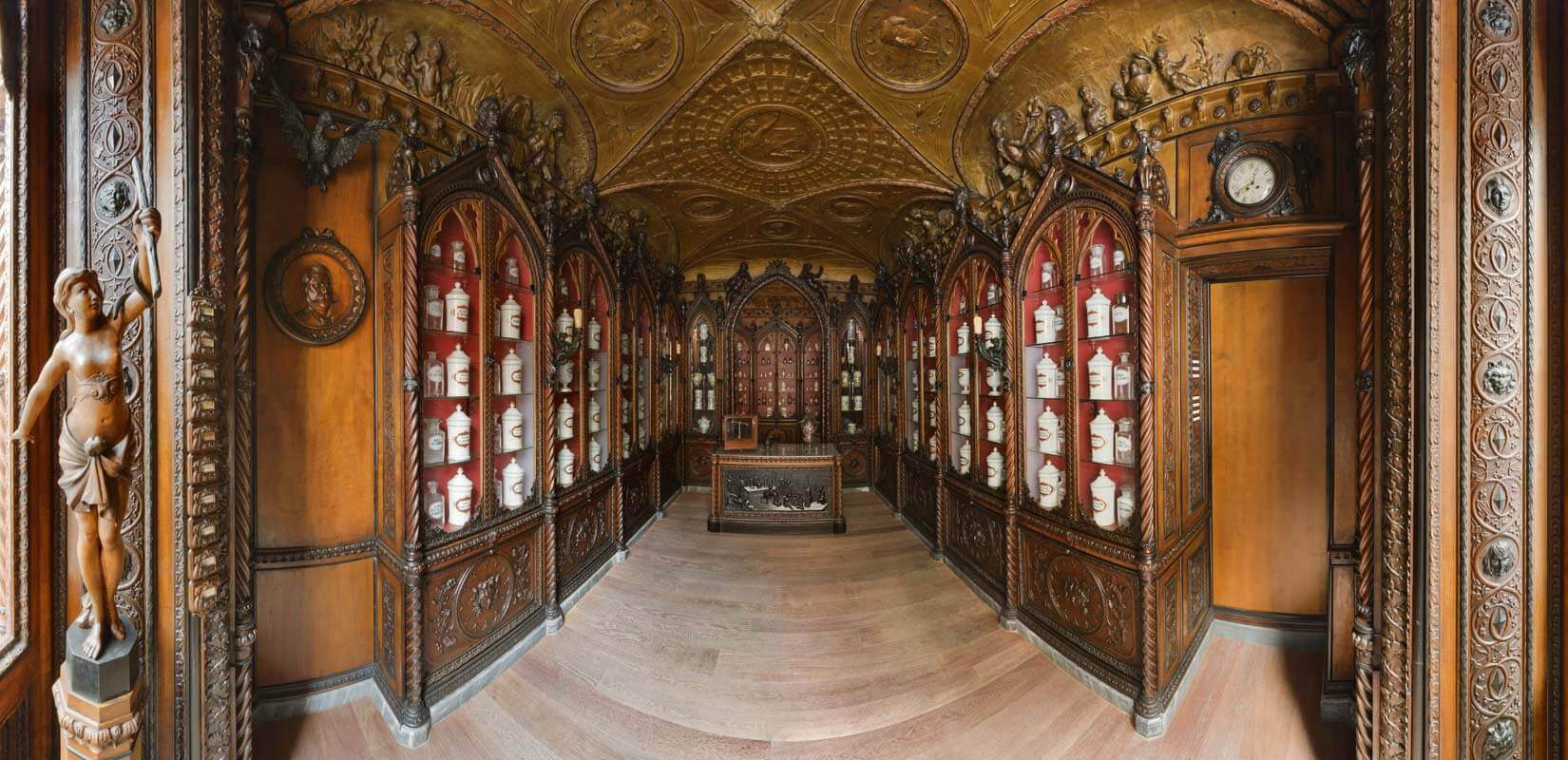
6. The Oratory of Charity
TheOratory of Charity was begun in 1587 and houses the Confraternity of Charity. It has a rectangular floor plan and trussed ceiling, and the interior is decorated with a cycle of frescoes depicting the seven Spiritual and Corporal Works of Mercy, a popular theme during the Counter-Reformation. The frescoes, painted in the late 16th century by Filippo Bellini of Urbino, are arranged in fourteen panels alternated by pilasters and enriched with stucco and gilding. In the past, the oratory was used as a storage room for the Municipal Library.

7. The Oratory of Santa Maria Annunziata del Gonfalone.
The construction of theOratory of the Gonfalone in Fabriano began in 1610, desired by the Marian confraternity of the same name. The Oratory is famous for its coffered ceiling, composed of 15 panels carved and decorated in pure gold and silver, the work of French sculptor Leonard Chailleau, known in Italy as Leonardo Scaglia, an expert in wood carving and decoration, who completed it in 1643. The walls of the Oratory, on the other hand, are adorned with a cycle of canvases dedicated to the life of the Virgin, painted by Francesco Bastari in the early 17th century, while the altarpiece by Antonio Viviani, known as the Deaf, depicts theAnnunciation of the Virgin. The Confraternity, which in 1808 changed its name to the Company of the Blessed Sacrament of St. Benedict of Fabriano, finally ceased its activities around 1970.
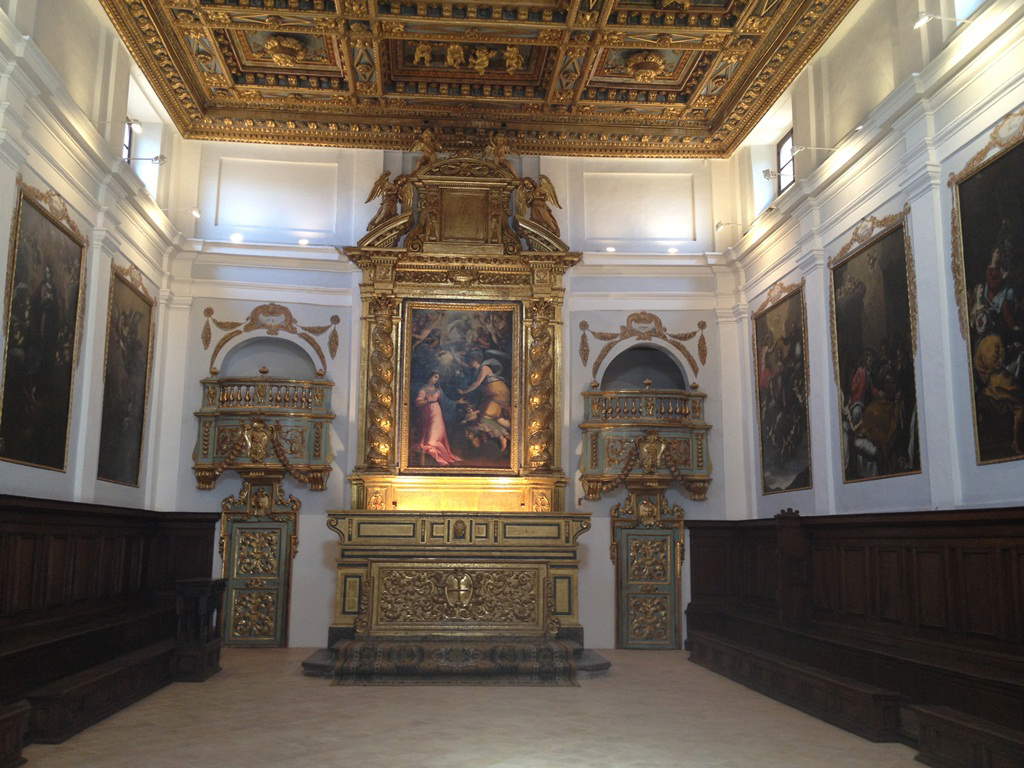
8. The Archaeological Area of Attidium
The Roman center of Attidium was located in the present-day hamlet of Attiggio, not far from Fabriano. The oldest archaeological remains date from the late Neolithic period. An excavation campaign in 1959, revealed a deposit that showed the presence of several later settlements: a Late Neolithic layer with post holes and a hearth, a Copper Age layer, Middle Bronze Age post holes, a Picenian settlement from the 5th century B.C., and some Roman burial remains. Even before Romanization, Picene, Celtic, and probably Umbrian communities were present in the area of the upper Esino valley. In particular, linked to Attiggio, the existence of the priestly college of the Fratres Atiedii, mentioned in the Tavole Iguvine, the Umbrian sacred text compiled between the 3rd and 1st centuries B.C., currently preserved in the Museo Civico di Palazzo dei Consoli in Gubbio, is speculated.

9. The Abbey of San Vittore delle Chiuse.
TheRomanesque Abbey of San Vittore delle Chi use was built by the Lombards towards the end of the 10th century, located at the beginning of the Frasassi Gorge and surrounded by an amphitheater of mountains, from which it takes its name “delle Chiuse” for its hidden and also protected position. The present complex dates from the 14th-15th centuries, while the church dates from the 11th century. The undecorated interior features round arches. The architecture to the east, on the other hand, features a Greek cross plan inscribed in a square with five apses and a facade tower. A curious detail is the inverted infinity symbol near the left altar door, which attracts the attention of scholars and is believed to have been left by the Templars.
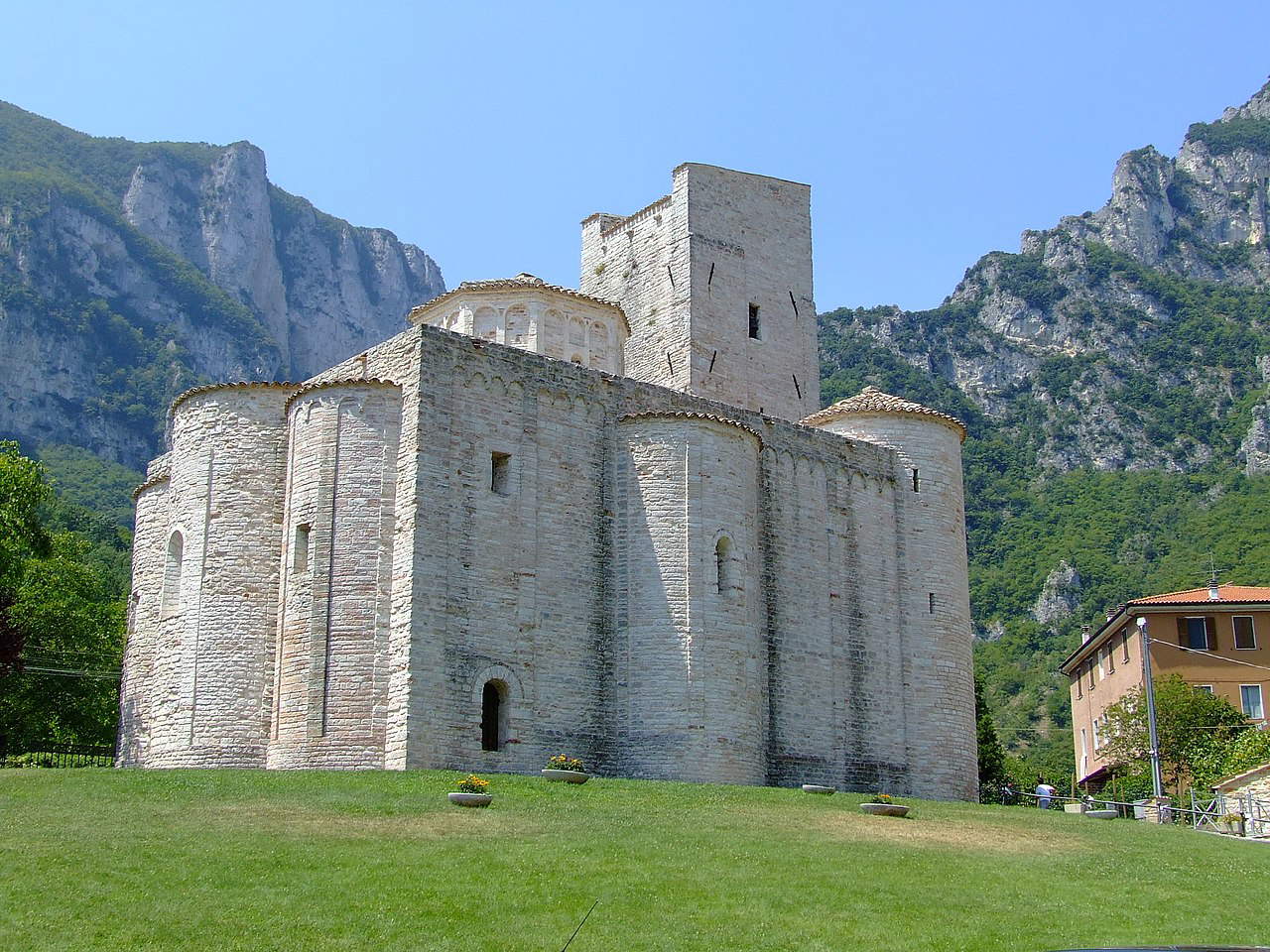
10. Frasassi Caves
The Frasassi Caves, are a complex of underground karst caves that are part of the Gola della Rossa e di Frasassi Regional Natural Park. The cave system includes various environments, including theAncona Abyss, which is easily accessible to visitors who can still admire the beauty of the underground caves. The discovery of Grotta Grande del Vento, an integral part of the Frasassi Caves, took place on Sept. 25, 1971, thanks to Rolando Silvestri of the Marchigiano CAI Speleological Group of Ancona, who found the entrance during an expedition led by Giancarlo Cappanera. The lighting, on the other hand, taken care of by Cesarini of Senigallia, made it possible to make one of the most fascinating parts of the cave accessible to tourists, which was inaugurated on September 1, 1974.
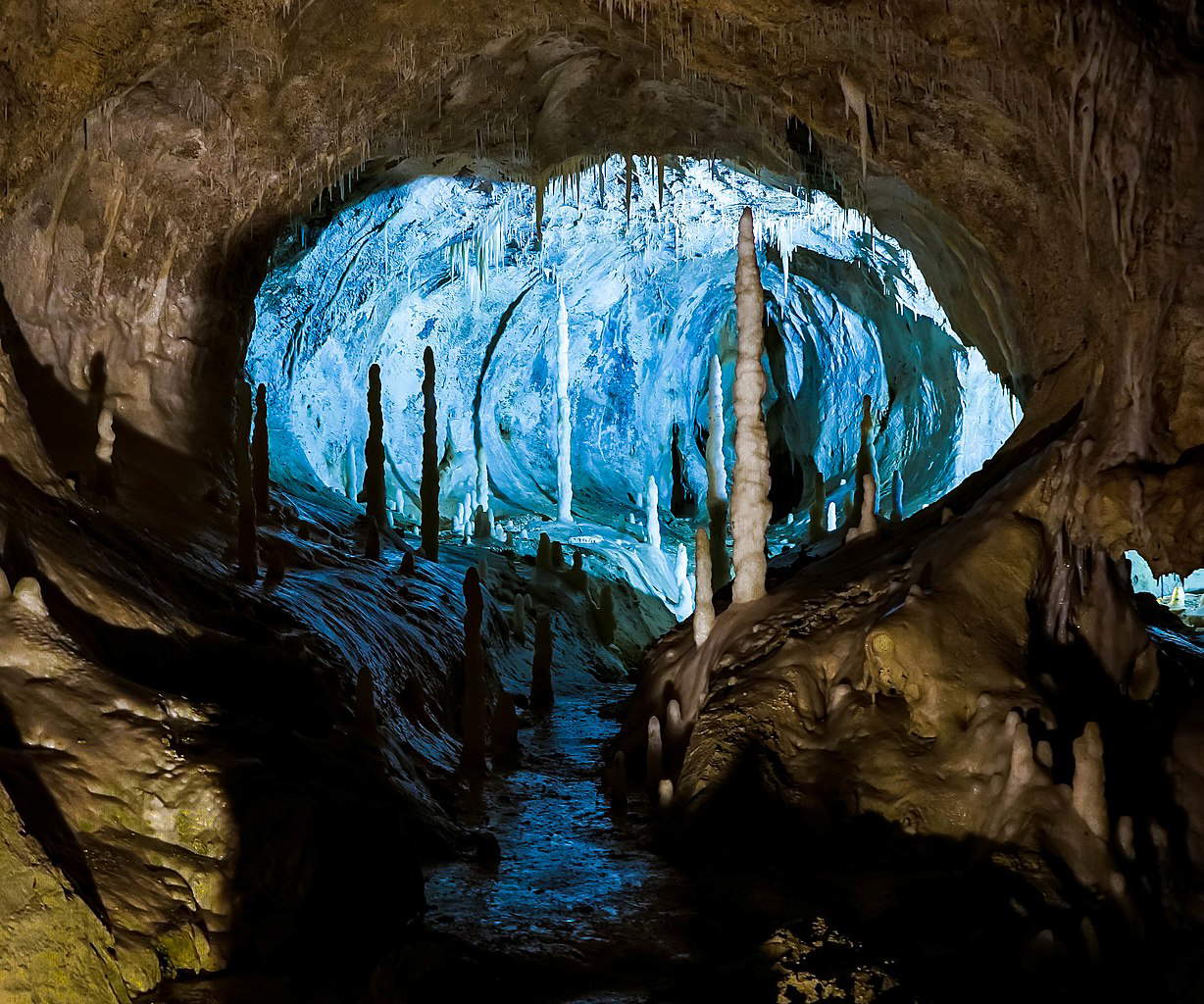
 |
| Fabriano, what to see: 10 places to discover in the city of paper |
Warning: the translation into English of the original Italian article was created using automatic tools. We undertake to review all articles, but we do not guarantee the total absence of inaccuracies in the translation due to the program. You can find the original by clicking on the ITA button. If you find any mistake,please contact us.





























